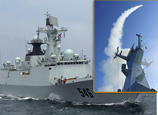
Some 130 kilometers of expressways, 308 km high-speed railways, 120 new air routes as well as four large ports were built or opened during the past five years to accommodate more domestic and overseas tourists.
Construction will begin on an airport at the coastal town of Boao this year. It is expected to be fully operational by the end of 2015, the governor said.
A group of key infrastructure projects are also under construction including a crude oil loading terminal, a liquefied natural gas station, a nuclear power plant and a water conservancy hub.
At the same time, the province's financial sector is also growing, with seven local companies listed on the stock market and 41 rural financial institutes established.
Hainan's booming industries have attracted the Asia Financial Cooperation Association to settle on the island, while nine financial institutions have set up subsidiaries.
As well, the provincial government has carried out a series of reforms on taxation, logistics, medical services and burial customs.
In the five years, the province received nearly $7 billion in foreign investment, and had $57 billion worth of exports and imports.
It also participated in regional trade in the China-ASEAN Free Trade Area, continued to deepen communication with Hong Kong, Macao and Taiwan, and established cooperation with 15 Chinese ministries and 23 State-owned companies.
A batch of international events were also held on the tropical island, including the Boao Forum for Asia, BRICS Leaders Meeting, the Third Roundtable Conference on China-Africa Cooperation and Tour of Hainan Island Cycling Race.
The quality of life for locals also improved during the five years.
More 460,000 low-rent apartments were built while personal income in both urban and rural areas grew at double-digit rates.
The local governments offered 460,000 job positions, trained 380,000 rural residents and laid-off employees, and reduced the urban unemployed rate to under 4 percent, he added.

















 China uses PM 2.5 in weather alert system
China uses PM 2.5 in weather alert system


![]()
